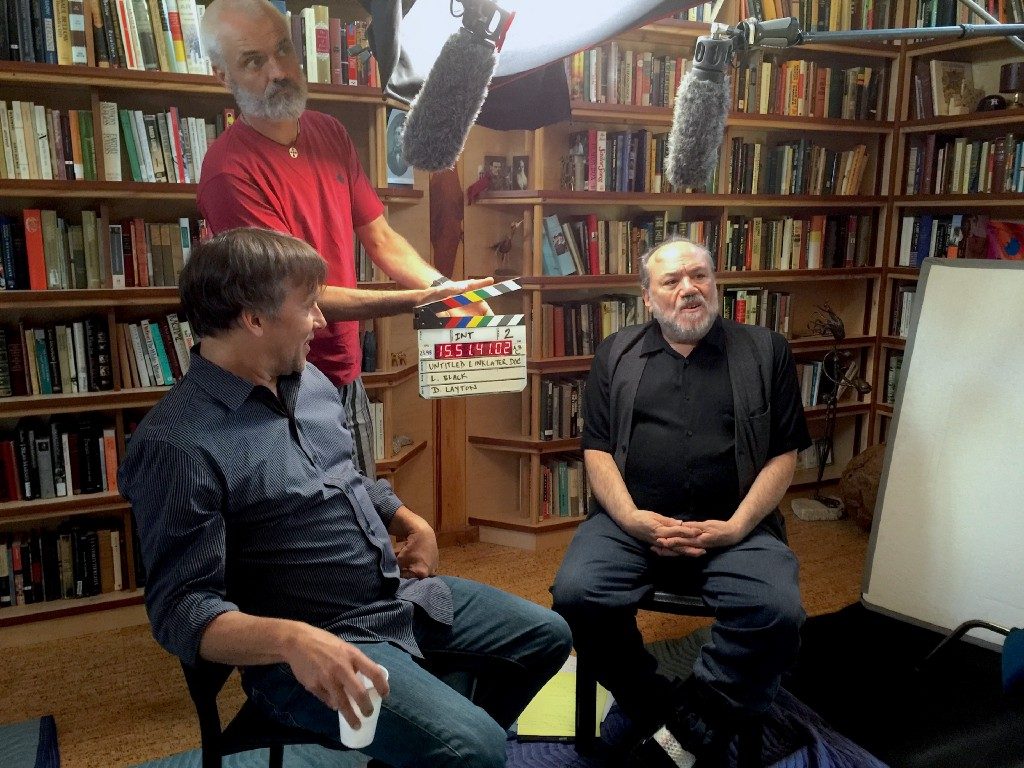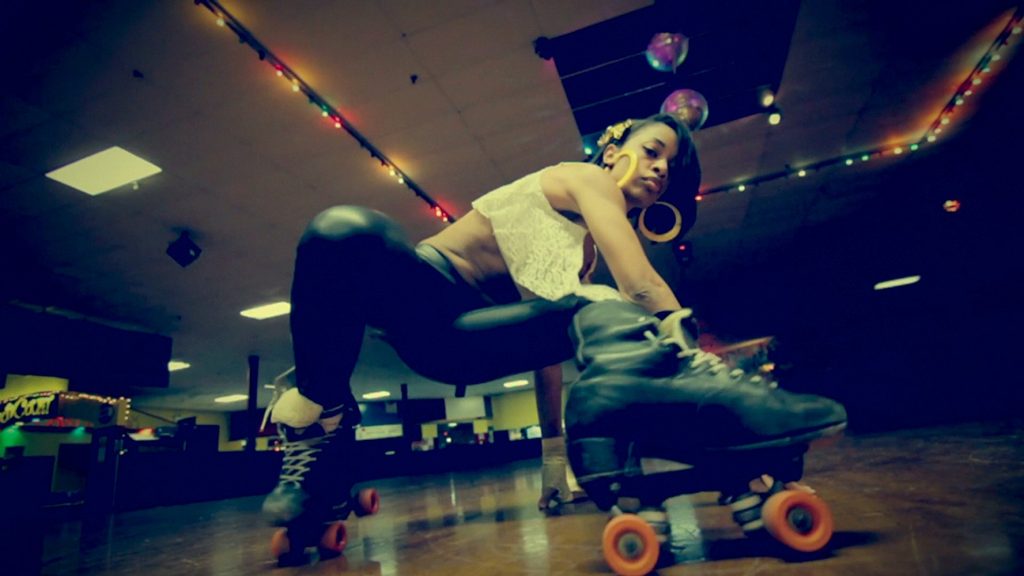Karen Bernstein has produced various documentary projects, including “Body of War,” “Troop 1500,” “Children of Giant,” and episodes of “American Masters.” Bernstein received an Emmy award for Outstanding Non-Fiction Series for her work on “Ella Fitzgerald: Something to Live For.” She made her directorial debut in 2004 with the television documentary “Are The Kids Alright?” and went on to direct episodes of “Art in Progress” and “Arts in Context.” Bernstein’s work has been screened at over 100 international film festivals, including Sundance and Berlin.
“Richard Linklater: Dream Is Destiny” will premiere at the 2016 BFI London Film Festival on October 15.
W&H: Describe the film for us in your own words.
KB: “Richard Linklater: Dream Is Destiny” is, obviously, a biography of a writer-director at the midpoint of his career. But — more than just a straightforward biography — it also explores the world of the American Indie Film movement of the 1980s and ‘90s, and how film ideas were emerging from cities and towns outside of the Hollywood/New York City grid.
When I first moved to Austin from New York in 2001, it was due in no small part to the impression that Rick’s first feature, “Slacker,” had made on me. The classic mantra-like question every young filmmaker entertains is, “Can I direct my projects from anywhere in the world and still be taken seriously?” In Linklater and Austin, there seemed to be such possibility.
It’s funny because when I landed in Austin for the first visit, the airplane gave me my only aerial view of Central Texas and I remember how taken aback I was by the landscape. It was so much more green and leafy than the Texas one finds in Westerns. So, in some ways, this film is my proof to all my New Yorker and European film snob friends that there can be artistic brilliance outside of their creative centers.
W&H: What drew you to this story?
KB: I had worked for seven years at PBS’s “American Masters” in New York, so arts and culture biography was, in many ways, the name of my game. When I landed in Austin, I thought of Richard Linklater as a pitch almost immediately and, in that same vein, Louis Black. They had asked me to be on the Austin Film Society Board of Directors — an organization that is central to the filmmaking community here — and I had a nice opportunity to learn about the cultural history and impact that non-profits had in Austin.
It was also interesting to see how the two of them interacted with one another to further the cause. These were two men obsessed with film, music, and filmmakers in a way that was entirely organic and unpretentious. At the time, Austin was a small-to-midsize city, so everyone seemed to pitch in and help on every other project. As opposed to New York, where you have to go through agents and reps and publicists, Austin seemed a most accessible community.
Since Louis Black had started the Austin Chronicle and SXSW, that help was just a casual phone call away; [he is] ever available to talk about your next project idea. At the time, the Chronicle and SXSW were very much committed to building a creative community in Austin. Now that they’ve succeeded, the stories have reached national and international scope, so the question becomes, “How does that change the quality of the filmmaking that Linklater makes?”
I would say that progress and success have had very little impact on Richard Linklater except, by some degree, flattery. The ideas he has and scripts he writes are as original as [his work during] the early ‘90s. That persistence and vision with such a modest demeanor makes him a really interesting subject, especially as a mover and shaker against the Hollywood odds. The writer-producer John Pierson had also moved to Austin, so I knew it would be possible to bring a certain level of expertise to the documentary’s view on indie cinema without seeming to be stiff and out of place.
W&H: What do you want people to think about when they are leaving the theater?
KB: I want people to turn to their date after seeing our film and say, “Gee, who is that great documentary filmmaking team? I want to hire them to do a biographical film about Meryl Streep.” I am only just half kidding about that!
I think my greatest hope is one that has actually come true. People have left the theater telling me how much they want to revisit Linklater’s films or view them for the first time. Linklater’s story has resonated with a lot of middle and high school kids because, in many ways, it is the American Dream.
He started life as a “jock” baseball and football star, left that career path for physical reasons, but, through hard work and focus, was able to switch tactics in a most ingenious way. That is the American Dream we want our children to have: a sense of limitless wonder about the world.
Linklater never felt resigned to a particular career path, even though anyone who knew him would’ve guessed he’d become a baseball coach or sports writer, as his stepmother suggested.
W&H: What was the biggest challenge in making the film?
KB: Money, of course. It’s astounding to me that — having done this work for 35 years — it is even harder to raise funds to get documentaries off the ground. There is a lot more competition out there than ever before. By comparison, everything else was easy, especially working in such close proximity to Linklater himself.
We were on the set of his film “Everybody Wants Some!!,” and that was like every director’s dream for their documentary. I thought it would be much harder to approach the actors and crew for interviews and access, but we were such a small, roving crew and the vibe on the set was so inviting that we never felt at odds with Linklater.
He’s the nicest guy in the world, genuinely so, but I think it is hard to get him in a place to talk about life outside of work. In the end, he felt the film wasn’t too embarrassing, which, at the time, felt like high praise. Just recently, he asked us to send a link out to the actors in his new film project so that they could get a sense of how he operates as a director, and that really felt like high praise.
W&H: How did you get your film funded? Share some insights into how you got the film made.
KB: We raised all of the money through an LLC and private investors. Maybe they will actually make their investment back! We have distribution deals with IFC Films and PBS’s “American Masters.”
W&H: What does it mean for you to have your film play at LFF?
KB: It’s wonderful to know that a European audience still has the respect for such an American Indie film. If I weren’t so poor right now, I would definitely come to the festival, particularly because I have wanted to actually see BFI, and meet and greet London filmmakers.
W&H: What’s the best and worst advice you’ve received?
KB: The best advice I’ve ever been given is to be especially nice to all interns because they’ll someday be your superiors or on a grant panel. That has come true on more than a few occasions. I just recently found out that one former intern — now producer in San Francisco — just hired an intern/assistant editor I hired here in Austin. My life felt complete somehow.
The worst advice I ever got was to get a magazine subscription to “TV Guide,” and watch a lot more television if I wanted to understand the industry. Oy vey.
W&H: What advice do you have for other female directors?
KB: Shrug off the people who insist that you are being a bitch by expressing an opinion in a roomful of men. Don’t cower to those who’ve come before you in the field; pay them their due respect, but hold on to that sense of what you feel is best.
W&H: Name your favorite woman-directed film and why.
KB: Oh, there are so many, but in terms of role models I would look towards Barbara Kopple and “Harlan County, U.S.A.” That film is the epitome of on-the-ground, embedded filmmaking at its best.
Also, Lizzie Borden’s “Working Girls” had a significant influence in how I look at storytelling, since that was a well-researched documentary cloaked in a fictional construct. I learned that sometimes you can reach the absolute truth in fiction, if it’s done well.
“High Tide” by Gillian Armstrong is also a favorite film, in that it looks so intensely at two lives just by dint of circumstance.
W&H: Have you seen opportunities for women filmmakers increase over the last year due to the increased attention paid to the issue? If someone asked you what you thought needed to be done to get women more opportunities to direct, what would be your answer?
KB: There should be more panel discussions and opportunities to help one another, rather than put us in competition. I also think that, especially here in America, we must acknowledge that middle-aged women are as important to the screen as they are to the stories being told. Older women should be hired with the same frequency as the young hotties because it shouldn’t be a beauty contest!







